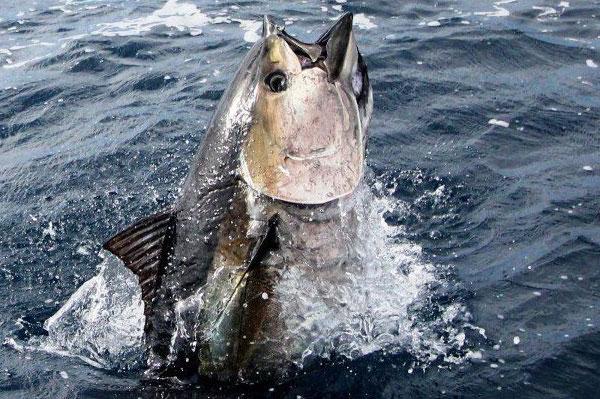Southern bluefin tuna
Episode #4 of the course “The Most Endangered Species in the World”
The southern bluefin tuna has long inhabited the warm waters of the Pacific, Atlantic, and Indian Oceans. In the past 50 years, the population has been devastated by overfishing, which wiped out nearly 85% of southern bluefin tuna in the world. The fish has been considered a delicacy in Japan as far back as 5000 years ago. Today the southern bluefin tuna is so rare of a prize that a single fish can sell for tens of thousands of dollars at auction.
Called the King of the Fish, or the Tuna of Tunas, this massive, highly-evolved fish can be 700 pounds or more and as long as 10 feet. The southern bluefin tuna has a lot of bones and a lot of lean muscle. Their shape is “torpedo-like,” with strong tails that propel them at top speeds. Their eyes are set on the sides of their head, and their fins are retractable on the sides, so they are one of the most hydrodynamic fish, making them an entertaining sport for deep-sea anglers.

With long lifespans in the wild, southern bluefin tuna live up to 40 years. They are not mature enough to reproduce until about 8 years old, but many do not live even that long. It is difficult to keep them in pens because of their speed, size, and delicate skin, so they are not farmed in the same ways as other fish. Instead of being penned or corralled, these fish are netted as they travel on their migration routes. For example, it was once considered a sport to net them as they came through the Straits of Gibraltar. Over the years, the nets have begun yielding lower amounts not only from overfishing of young populations of tuna themselves, but from overfishing the food that southern bluefish tuna eat, such as small invertebrates and fish like mackerel.
Share with friends

